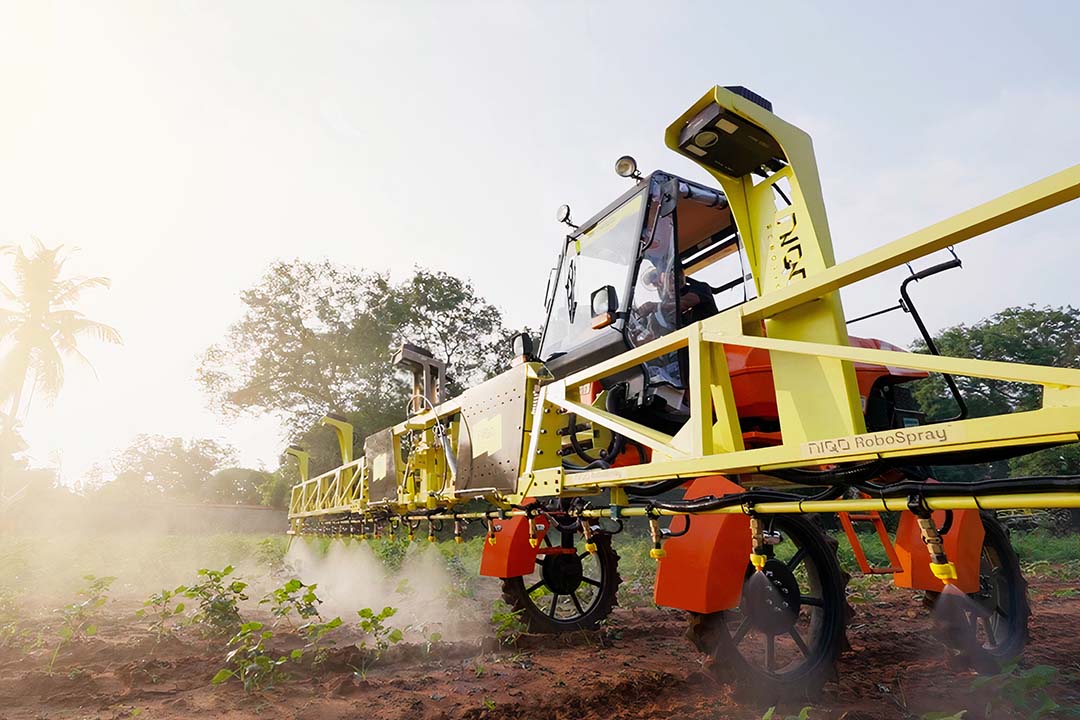- Thu. Apr 25th, 2024
Latest Post
Arcadia Biosciences to Release First Quarter Financial and Business Results, Host Conference Call on May 9, 2024
Arcadia Biosciences, Inc.® (Nasdaq: RKDA) is set to release its financial and business results for the first quarter of 2024 after market close on May 9, 2024. The company will…
Breaking Down the Balance: How Meandering Rivers Migrate and What Managers Can Do to Help
Greenberg and Ganti carried out a research to investigate the dynamics of river migration rates. They gathered data from existing measurements of river migration rates and added information from about…
Niqo Robotics: Revolutionizing Sustainable Agriculture with AI-assisted Spot Spraying in India
Niqo Robotics, a cutting-edge Indian startup, is committed to developing precision robots for sustainable agriculture. Their innovative technology has been successful in reducing chemical costs by up to 60%, without…
Bird Flu: New USDA Restrictions on Dairy Cattle Amid Growing Concerns over Food Safety
Due to the increasing cases of bird flu in eight states, the USDA has recently implemented new restrictions on dairy cattle. At a press conference, Bernadette Albanese, the Medical Director…
Micron’s 232-Layer QLC NAND Flash Memory Now in Mass Production: Boosting Performance and Compactness for Mobile, Client, Edge, and Data Center Storage Use Cases
Micron Technology Inc., a leading semiconductor manufacturing company, has announced that its 232-layer QLC NAND flash memory is now in mass production. This advanced technology is being shipped to enterprise…
Honoring a Decade of Academic Excellence: The Gamma Tau Chapter of Delta Omega at Mason’s College of Public Health Inducts First PhD Cohort
The College of Public Health is proud to mark the milestone of its tenth anniversary in recognizing academic excellence in public health through the Gamma Tau chapter of The Delta…
Rise to the Top in Business Analytics with Our Ranked Master’s Program: Exclusive Info Session Coming Up
Embark on a journey towards success in the dynamic world of business analytics with our Master of Science in Business Analytics program. Our program has been ranked #4 in the…
Revolutionizing Healthcare Finances: Streamline Health’s Integrated Solutions for Pre-Bill Revenue Integrity
Streamline Health Solutions, Inc. has announced an expansion of its partnership with a 700-bed Oracle EHR based health system. This system, which consists of 5 facilities, has been utilizing RevID’s…
Honeywell’s Innovative Unicracking Technology Revolutionizes Sustainable Aviation Fuel Production
Honeywell has recently announced that its latest hydrocracking technology is capable of producing sustainable aviation fuel (SAF) from biomass in a less carbon-intensive way compared to traditional fossil-based jet fuels.…
Paws of Comfort: How Pets are Helping Americans Manage Stress and Improve Mental Well-Being
As part of Mental Health Awareness Month in May, we are seeking submissions from readers on their strategies for coping with stress. Your insights could help others who are struggling…



